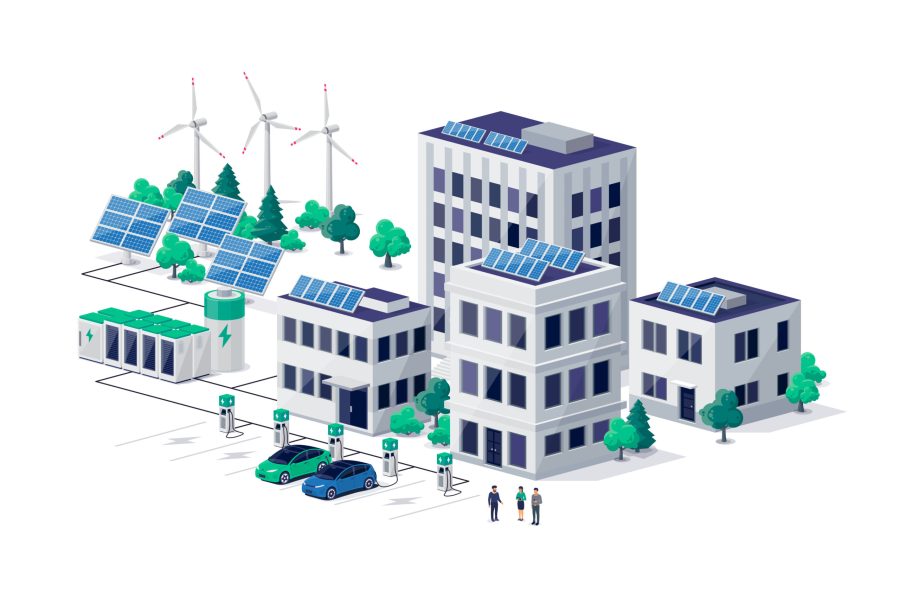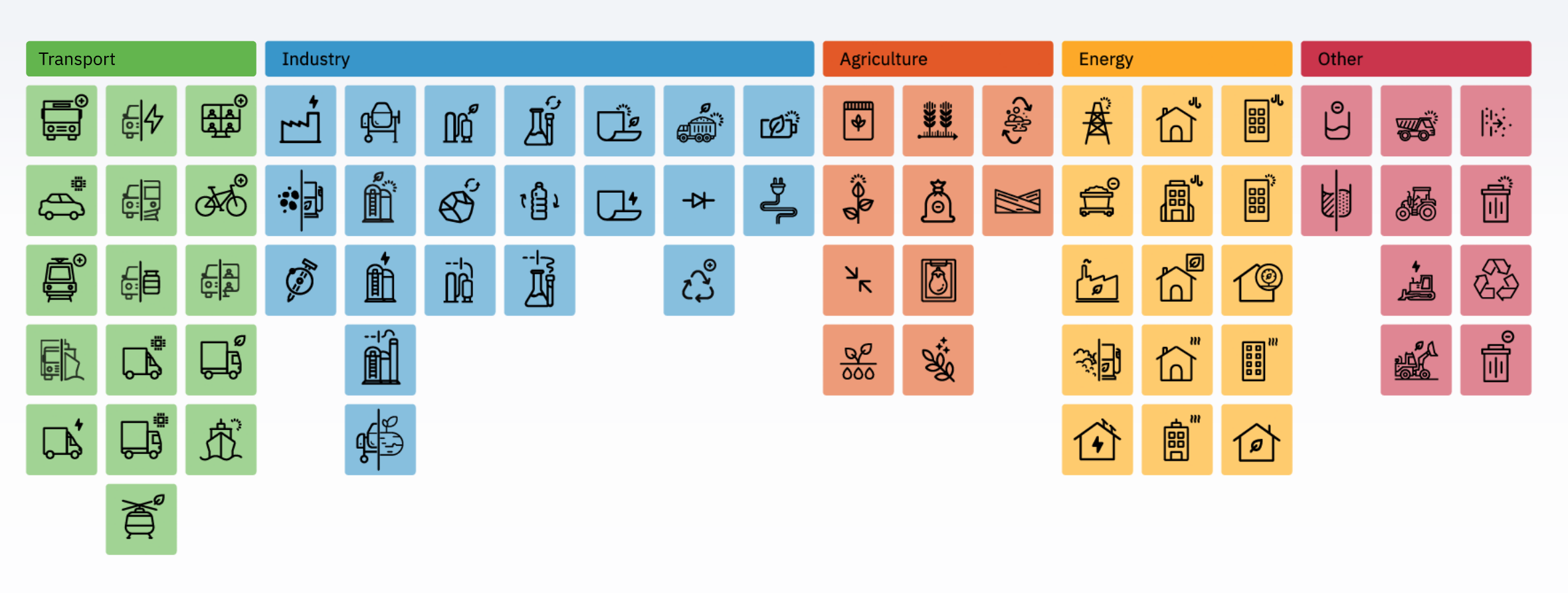Cities and Net Zero: Resources for the Road Ahead

Henriette Ruhrmann
Why is progress towards net zero so important for cities?
Today, every second person on earth lives in a city. The World Bank expects urban populations to continue growing in the future, doubling their numbers by 2050 (World Bank 2022). Even at their current scale, cities produce over 75% of CO2 emissions (UNEP 2023). Achieving a net zero future is therefore only possible if cities do their part. More and more cities are committing to net zero targets, but the movement has still reached only 20% of cities with over half a million inhabitants (Oxford Net Zero Tracker 2023).
IPPO Cities is bringing together city policymakers and urban net zero expertise from across continents at its February 20, 2023, policy roundtable (register here for free) to discuss their experiences, successes, and challenges in striving for net zero. The roundtable also forms part of IPPO’s broader work on achieving net zero. Professor Sir Geoff Mulgan, IPPO’s Co-Investigator and chair of the session has created a net zero information hub mapping evidence, databases, and policy coalitions for policymakers who need to know what works. This briefing note builds on this work by focusing on city-level solutions.
What can cities do to reach net zero?
A net zero city produces at least as much clean energy as it consumes. Cities can therefore reach net zero through a combination of conserving energy and producing or buying clean energy. The Bloomberg-funded online web portal Net Zero Pathfinders collects best practices across cities that developed innovative programmes to move towards consuming less and cleaner energy.
If we imagine a city from the ground up, conserving energy starts with the architecture of the energy grid. A “smart grid” can help cities efficiently integrate energy supply and demand from a larger number of micro-energy producers in a decentralised system. Smart grids can even include the public energy-consuming fixtures in a city, such as streetlights, and make them more efficient. Milan’s Sharing Cities Project is one such example of smart grid development, with Tokyo’s building-level cap-and-trade system another notable example of integrated action.
Next, the city’s physical infrastructure is crucial to its energy Usingeans of permitting and subsidies, cities can push towards new green construction and retrofitting older buildings with energy-conserving insulation, heating, and lighting systems. For example, Vancouver has a zero-emissions policy for new construction, Seoul provides zero-interest loans for energy efficiency retrofitting, and Cincinnati offers financial assistance for equipment upgrades to its low-income community.
Moreover, how the city’s architectural layout is planned matters for energy conservation. Multiple centres, each providing the essentials of urban life, help reduce the need for transportation. The ideal here is the 15-minute city, an urban layout that allows residents to access any regular professional or leisure activity within a 15-minute walk or bike ride. For example, Portland, Melbourne, and Paris have integrated the 15-minute city urban planning concept into their policy strategies.
Another key concern is how residents move through a city. Promoting walking and cycling is the best strategy to make urban mobility emission-free. Many cities are therefore investing in their cycling infrastructure to make it a safe and comfortable option for daily transportation. Many cities in Scandinavia, the Netherlands, Belgium, and Germany, have invested in bike-friendliness for years. More are catching up, including Paris and cities across the US. The next most energy-efficient urban transportation after cycling is electrified public transportation, as in Jakarta, and private vehicle sharing, as in Paris.
Energy conservation is ideal but for the energy that cities need to consume to keep their residents warm and safe, pivoting towards using clean energy is key. Yokohama, for example, is moving towards consuming only renewable energy in public buildings by 2025. Likewise, San Francisco offers financial incentives to incentivise private citizens and businesses to switch to renewable energy sources. For when citizens are on the go, Los Angeles is investing in Streetlight EV Charging Stations. Sourcing clean energy can involve a combination of buying or producing clean energy. At the city level, that can include installing and permitting rooftop solar systems, as Yokohama demonstrates.
What tools are available to support cities on their path to net zero?
All transitions involve careful and strategic planning and cities have multiple, recently developed tools available to support them in their net zero transition process. A digital tool that is making major waves in climate action planning is Climate OS. The modelling tool projects the impact of policy decisions across domains, from transport to industry, agriculture, energy, and others. City policymakers can use the tool to directly see the consequences of different actions across an interconnected economic system helping them to evaluate cost-benefit trade-offs in their policy strategies.

Figure 1: Climate OS breakdown of transition into manageable shifts
At the core of effective planning is high-quality data. To improve cities’ access to data, the UK Power Networks established an Open Data Portal. As a first step, UK networks brought together local policymakers, as well as industrial customers and consultancies to establish data needs. The City of London and the County of Essex then collaborated directly with UK Power networks to establish the current large collection of openly available datasets relevant to local area energy planning.
Cities have more analogue, hands-on support available at Energy Systems Catapult, an independent, not-for-profit centre of excellence set up and monitored by Innovate UK. The centre offers governments and businesses support in net zero transitions. Their services for city governments span the policy cycle, from establishing a baseline and action plan to translating the plan into projects and engaging communities.
Transitions inevitably have their costs, but cities are not alone in shouldering the financial investment. The Green Finance Institute can help cities attract more private investment in their environmental goals. For example, the Green Finance Institute helped London identify barriers to private investment and maximise the impact of public investment. The City Climate Finance Gap Fund, funded by Germany and Luxembourg and implemented by the World Bank and the European Investment Bank in partnership with the Deutsche Gesellschaft für Internationale Zusammenarbeit helps cities scale up their public investment and close the urban climate financing gap for early-stage climate planning.
Which coalitions and networks exist for cities striving for net zero?
Cities around the world face the net zero challenge simultaneously and have established networks to exchange experiences and innovate together. One of the most prominent initiatives is the C40 Cities network and its knowledge hub. Founded in 2005 by Mayor of London Ken Livingstone, C40 is a coalition of large global cities committed to working together on their net zero ambitions. The network currently includes nearly 100 urban powerhouses and inspires action beyond its community of members with, more than 1,000 cities having joined its Cities Race to Zero.
The European NetZero Cities project is also actively supporting cities on their path to net zero. Funded by the European Union’s (EU) Horizon 2020 programme, the project’s goal is to “help cities overcome the current structural, institutional and cultural barriers to achieve climate neutrality by 2030”. The network behind the NetZero Cities project is large, currently spanning 33 leading city networks, research organisations, and urban stakeholders from 13 countries. Support is available to the project’s 112 “mission cities” that receive advice, assistance, and funding opportunities. Yet to be selected “pilot cities” will receive dedicated support for systemic transformations.
Private funders are also fostering support networks for cities. Bloomberg’s American Cities Climate Challenge, an initiative run by IPPO Cities’ supporter Bloomberg Philanthropies, awards a support package to its 25 winning cities including much-needed extra staff, technical assistance, and peer-to-peer network support.
Who tracks cities’ progress towards net zero and how?
Recognising progress and identifying shortfalls is key to navigating long-term urban transformations on the path to net zero. Oxford University’s NetZero Tracker maintains a database of cities’ net zero targets and their progress towards achieving them. Thus far, the NetZero Tracker includes information on 1,177 cities with more than 500,000 inhabitants, of which 241 net-zero zero targets.
The NetZero Tracker focuses on granular policy data. The CDP Cities, States and Regions Open Data Portal instead aggregates climate change and sustainability data. Through the portal, over 1,100 cities are self-reporting their climate actions. To extract more meaning from climate data, Bloomberg developed a proprietary algorithm to score cities’ progress towards a circular economy. The Circular Cities Barometer score (0-100) includes the current level of reducing, reusing and recycling across the categories of circular buildings, systems, living, and leadership. At present, 25 cities worldwide have been scored using the barometer’s algorithm.
Who are the leading thinkers in helping cities achieve net zero?
Several thought leaders have emerged in the debate around net zero cities. Their ideas have inspired radical change and continue to expand the horizon of urban climate action. Here are 5 thought leaders to watch and follow:
- Tomer Shalit (@tomershalit), founder of Climate View, the start-up that developed the modelling tool Climate OS.
- Farah Naz (@FarahNazSustain), award-winning Climate Change strategist and author of the book “Net Zero City”
- Sheila Foster (@SheilaRFoster), award-winning author and Scott K. Ginsburg Professor of Urban Law and Policy at Georgetown University and Co-Director of LabGov, an international applied research project that has pioneered a new model of urban governance, co-chair of the Equity Workgroup of the New York City Mayor’s Panel on Climate Change
- Dana Bourland (@dbourland), Senior Vice President for the Environment at The JPB Foundation and author of the book “Gray to Green Communities”
- Amina J Mohammed (@AminaJMohammed), Deputy Secretary-General of the United Nations and Chair of the United Nations Sustainable Development Group
Moreover, the following podcasts regularly invite new inspirational thinkers about how cities will reach their net zero ambitions:
- MIT’s Sustainable City Podcast
- Abby Finis’ and Larry Kraft’s City Climate Corner Podcast
